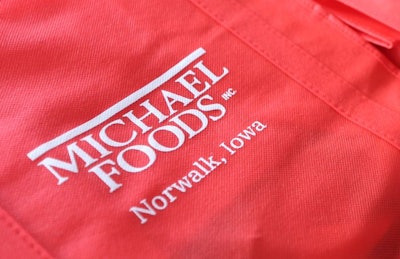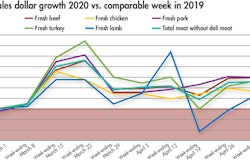
Post Holdings saw its foodservice segment’s profit decrease by almost 50% for the second quarter of fiscal year 2020, largely due to a sharp decline in foodservice activity during the stay-at-home orders related to the COVID-19 pandemic.
Egg and potato products from Post Holdings’ Michael Foods subsidiary account for the majority of the foodservice segment’s volumes.
Also adversely affecting the foodservice segment’s ability to be profitable during the quarter was a February fire at the Michael Foods facility near Bloomfield, Nebraska, and start-up costs associated with the Michael Foods precooked egg facility in Nowalk, Iowa.
The second quarter ended on March 31.
Slowdown in foodservice demand
The foodservice segment recorded a profit of $23.8 million for the quarter, down 49.8% when compared to the second quarter of 2019. Net sales for the quarter were $378.4 million, which represents a year-over-year decline of 2.7%.
The segment was performing well during the early stages of the quarter before the stay-at-home orders began. According to the company, prior to those orders, volume growth for the foodservice segment in January and February increased 5.4%, driven by increases of 3.7% in egg volumes and 13.9% in potato volumes.
However, things took a sharp turn in March. For the full quarter, volumes for the second quarter decreased 4.2%, with egg volumes decreasing 4.5% and potato volumes declining 2%.
Speaking during an earnings call on May 8, Post Holdings CEO Robert Vitale discussed how certain business sectors that are purchasers of Michael Foods products were more affected by the pandemic than others.
“Within foodservice we had channels directly affected by COVID response, and those less affected,” said Vitale. “Directly affected channels include full-service restaurants, quick service restaurants, education, and travel and lodging. These channels represent approximately 50% of segment sales. Less affected channels would include food ingredient, healthcare, government, and other smaller channels.”
Fire’s impact on profits
A fire at a Michael Foods egg laying facility near Bloomfield, Nebraska, on February 27 caused significant losses for the company during the second quarter.
Post Holdings reported that the incident resulted in about $3 million in expenses for the company, including a $2.5 million insurance deductible.
At the time of the fire, Post Holdings reported that hens were lost, and those losses accounted for less than 5% of Michael Foods total flock. According to the WATTAgNet Top Poultry Companies Database, Michael Foods had 13.3 million laying hens at the conclusion of 2019.
New egg processing facility
Post Holdings’ foodservice segment also incurred about $4.2 million in start-up costs (excluding depreciation, an approximately $2.8 million negative impact to segment adjusted EBITDA) at its new pre-cooked egg facility in Norwalk, Iowa, during the past quarter.
Ground was broken on the 150,000 square-foot plant in October 2019. The plant is expected to employ nearly 170 people when it reaches full production.
Outlook for recovery in foodservice channels
Vitale anticipates that the demand for Michael Foods foodservice products will gradually rebound, forecasting that 2019 levels might be reached again in 2022, with 2020 as the low point and 2021 somewhere in the middle.
How certain sectors rebound will likely vary, Vitale said.
“We think that there will be a fairly rapid recovery in (quick service restaurants) where the predominant transaction is either takeaway or drive-through. Education’s binary. They’ll either be open or closed. What we are saying is primary and secondary (schools are) likely to be open and colleges will be individual decisions,” he said.
“Full-service restaurants, we think, will have a slower path to recovery as they implement social distancing protocols that could constrain demand.
The travel and lodging industries will likely be the last ones to recover, Vitale added.
View our continuing coverage of the coronavirus/COVID-19 pandemic.


















